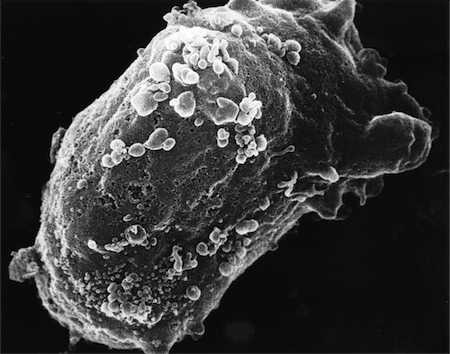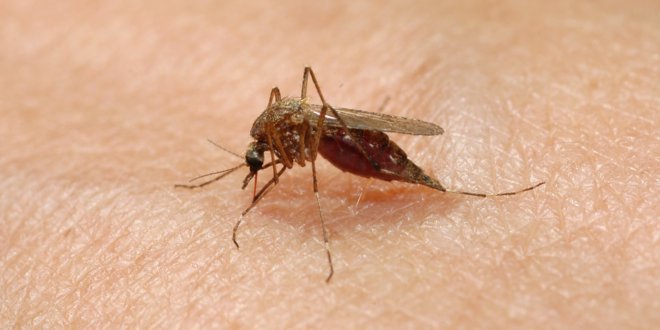In this last series of blogs we look at curing what ails humanity using 21st century technology. We’ll tackle this in several articles.
Many of our 21st century technology solutions may prove effective in treating a range of disease types. What diseases are on our immediate radar?
- HIV and AIDS
- Mosquito-spread Diseases – Malaria, Dengue Fever
- Cancer
- Diabetes
- Allergies and Autoimmunity
- Heart Disease
- Obesity
- Addiction
- Influenza
- The Common Cold
How close are we to finding cures? For some very close.
In this first blog will look at HIV and AIDS and diseases spread by mosquitoes.
Ending AIDS
Bioengineering a cure for AIDS means ending a global pandemic that infects 7,000 humans daily. Over 35 million humans today are infected with HIV, the virus responsible for AIDS. HIV attacks our immune system’s primary defences, the T cells. Specifically it attacks CD4+ T cells, cells that initiate the body’s response to an infection. HIV is classified as a retrovirus. Retroviruses use host cells to replicate themselves and CD4+ is HIV’s host. Once HIV has “occupied” a CD4+ cell it damages it until it dies leaving us with fewer to fight off other infections. Normal humans have 600 to 1,200 CD4+ cells per cubic millimeter of blood. Numbers below 500 require intervention in terms of treatment with retroviral drugs today. When counts drop below 200 a HIV infection turns into AIDS.

Today HIV-infected humans can live decades with the virus before AIDS because combinations of medications can be used to fight the virus. This medical breakthrough started in the mid 1990s and in the latter part of the first decade of the 21st century we have seen very hopeful signs in combatting the infection using gene therapy.
Today HIV is a chronic disease and not necessarily a death sentence. Retroviral drugs do not eliminate the infection, just keep it at bay. This presents an economic and supply challenge. The drugs have to be taken every day. They are expensive and as a result unaffordable to people in many of the Developing World countries.
Two approaches to managing HIV include creating a vaccine, or finding an outright cure. Currently it appears that we are closer to a cure and gene therapy is the technology involved.
The case of Timothy Brown represents what may prove to be the sought for breakthrough. Mr. Brown, an American, was diagnosed with HIV and leukemia. In 2007 and 2008 he received two bone-marrow transplants to treat the leukemia. The marrow donor lacked a protein that resides on 99% of all CD4+ T cells. Called CCR5, it is the protein that HIV uses as a way to enter a CD4+ cell.

As in all bone marrow transplant cases, Mr. Brown’s own immune system had to be destroyed for him to accept the donor. The replacement immune system produced a remarkable result. Mr. Brown, who now lives in San Francisco, has been HIV free since the transplant.
Bone marrow transplants represent an impractical way of killing HIV. But this startling success has scientists experimenting using gene therapy as a method to modify a patient’s immune cells by eliminating CCR5. Recently, Sangamo BioSciences successfully demonstrated a CCR5 gene disruption technology with promising initial clinical results. Sangamo is not alone in developing CCR5 inhibitors. Researchers at City of Hope, University of Southern California, and Calimmune at UCLA are developing CCR5 disabling technology in blood stem cells. Using these types of stem cells for transplants could lead to permanent immunity to HIV.
In 2012, we are much closer to an AIDS cure than ever.
Ending the Mosquito as a Disease Spreader
Mosquitoes have been called flying hypodermic needles. They infect 700 million people annually with a variety of diseases. Dengue fever, a tropical illness, infects 50 to 100 million people per year and has been spreading northward in North America as global warming changes climate patterns. Dengue hemorrhagic fever (DHF) represents a more serious disease with a fatality rate of about 5%. Up to 1 million people die from malaria each year. The El Nino weather effect may relate to the cycle of both malaria and dengue outbreaks. Mosquitoes transmit other diseases including encephalitis, Rift Valley Fever, Yellow Fever, West Nile Virus and Canine Heartworm. If we can stop the biting we can seriously limit the spread of these diseases.

A company in California has been studying how blood-feeding insects use olfactory neurons to detect CO2 gas plumes produced when humans and animals breathe out. Called OlFactor Laboratories, the company is creating technology that can be used as a repellent, inhibiting the detection of CO2 or, a lure, trapping insects using a CO2 emitter. This radical new approach delivers new, easier to deploy and more cost-effective tools in the fight against the transmission of infectious disease by blood-feeding insects.
Mosquitoes detect CO2 to locate prey. OlFactor Laboratories is considering several solutions with this understanding. One would generate a chemical that mimics CO2 acting as an odour trap. Another would involve creating an odour cloud to make CO2 emitters undetectable. OlFactor is looking at a chemical, butanone as well as derivatives such as butanal and butanedione. When CO2 detecting insects sniff these chemicals their CO2 sensors don’t work.
If OlFactor succeeds we will do a lot less of applying DEET and other chemicals to our skin and will witness a dramatic decrease in disease and death from mosquito bites. OlFactor expects to have this technology readily available before 2020.
In our next blog will look at curing technologies with cancer and diabetes as the target.









Symptoms of mold allergies are similar to the effects of seasonal allergies from pollen. Typical symptoms include watering of eyes, stuffy nose, wheezing, and asthma. Medical books will call this allergic rhinitis, which is normally associated with seasonal problems and hypersensitivity problems. Studies suggest that allergic rhinitis is comparable to cold-like symptoms. The reaction to these molds isn’t often immediate. It can sometimes be delayed, depending on the severity. With the support of allergy medication, one can treat mold allergies as with other allergies.
Hi Tiffanie,
I will be looking at the technologies biomedicine is deploying now and in the near future in upcoming blogs. If you have specific questions you feel should be addressed, please let me know.